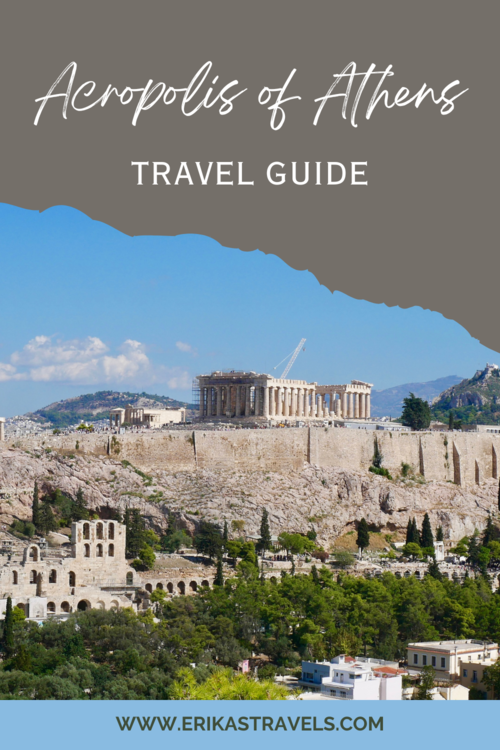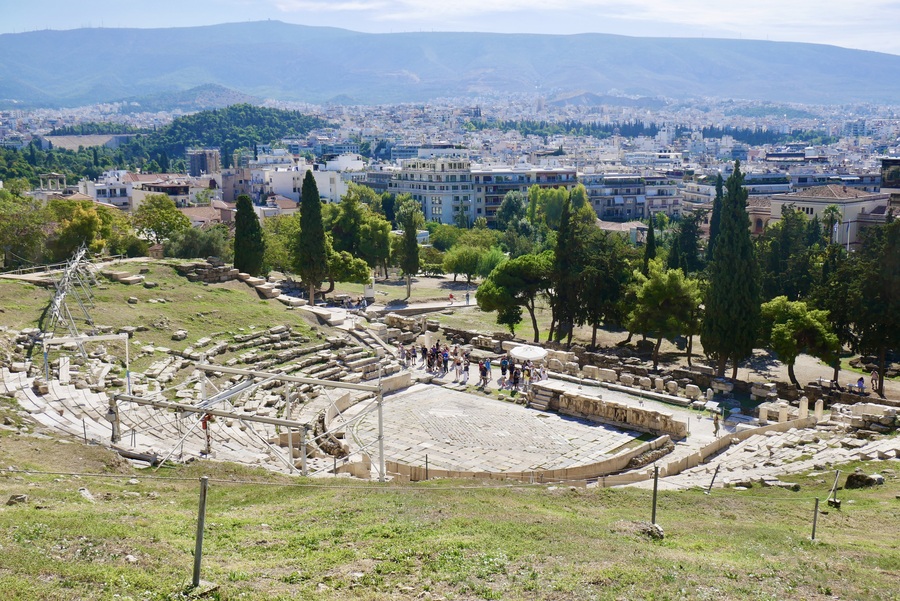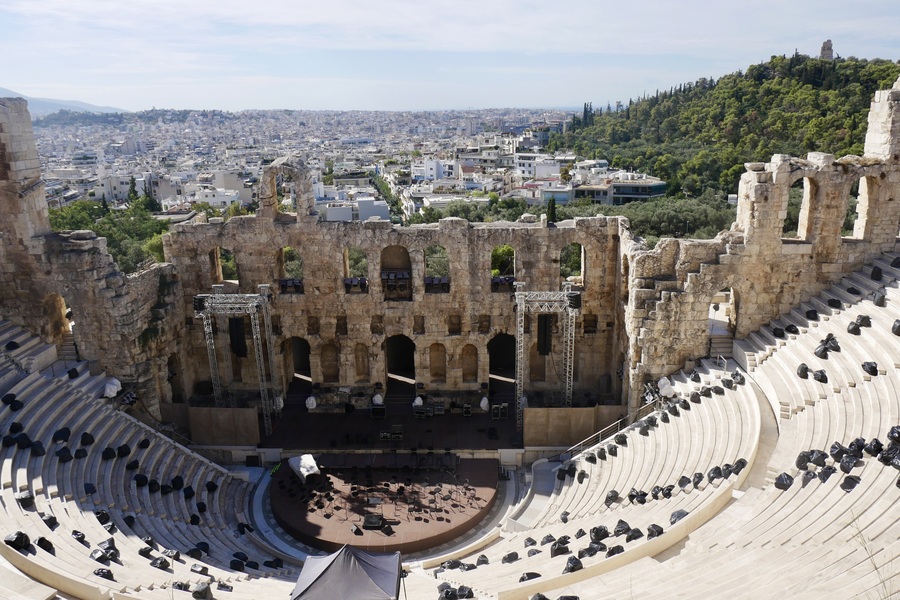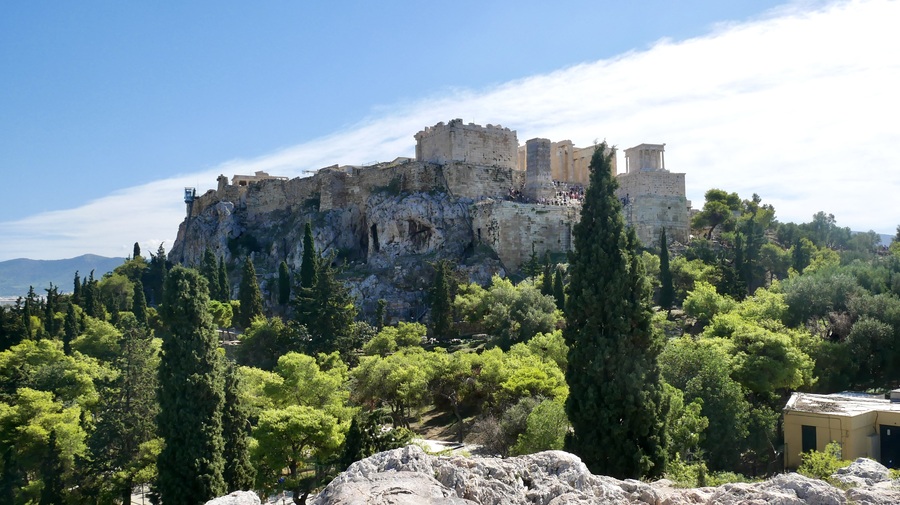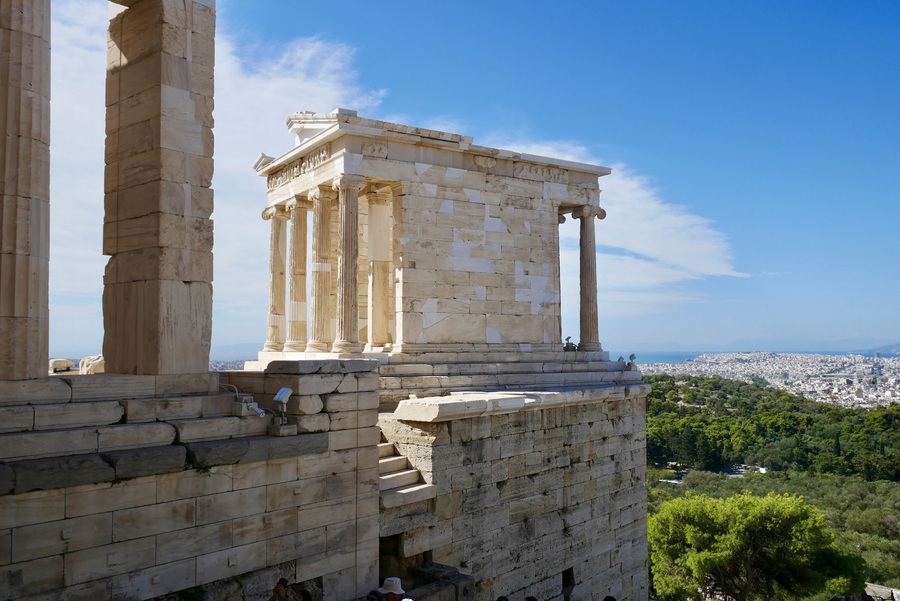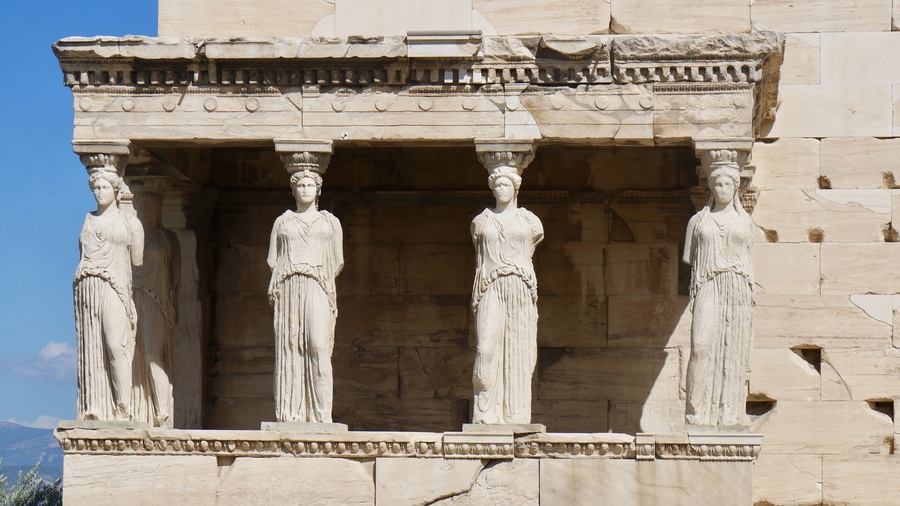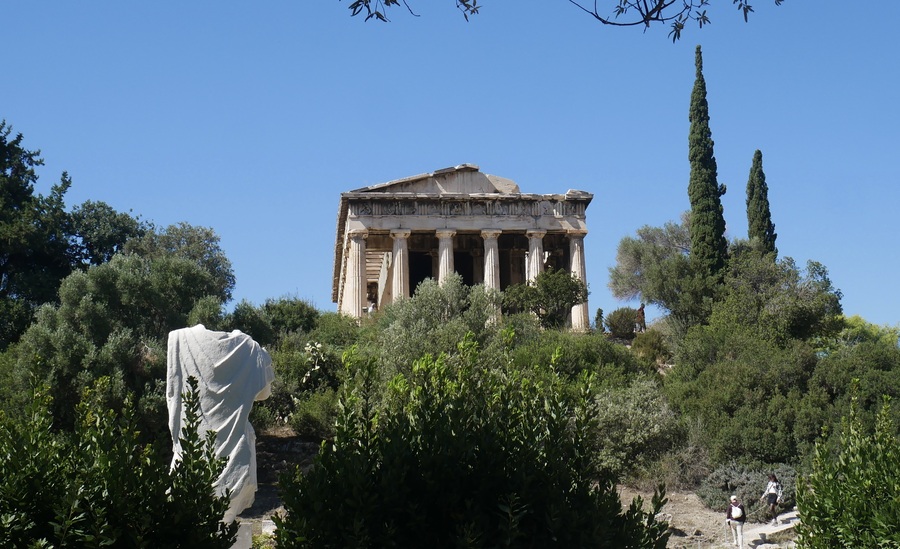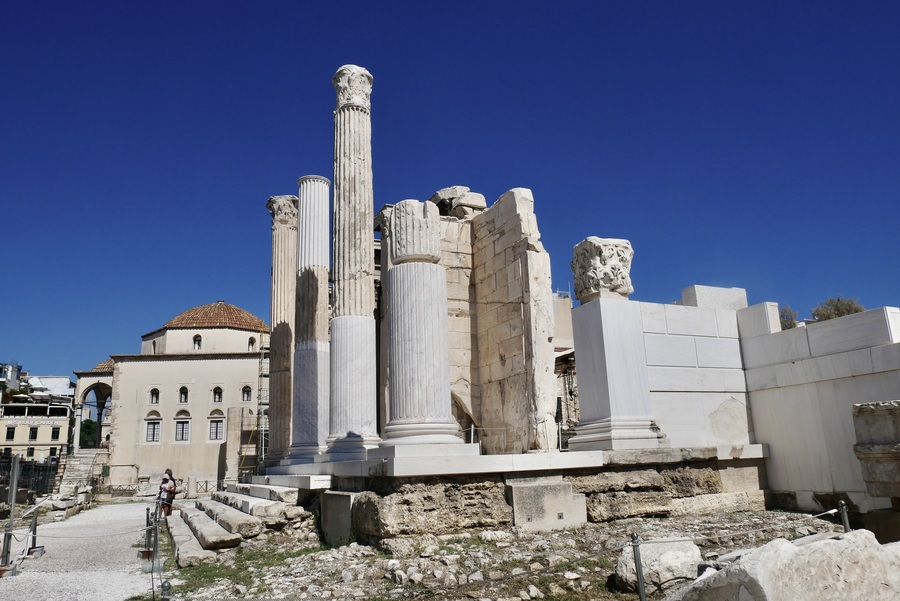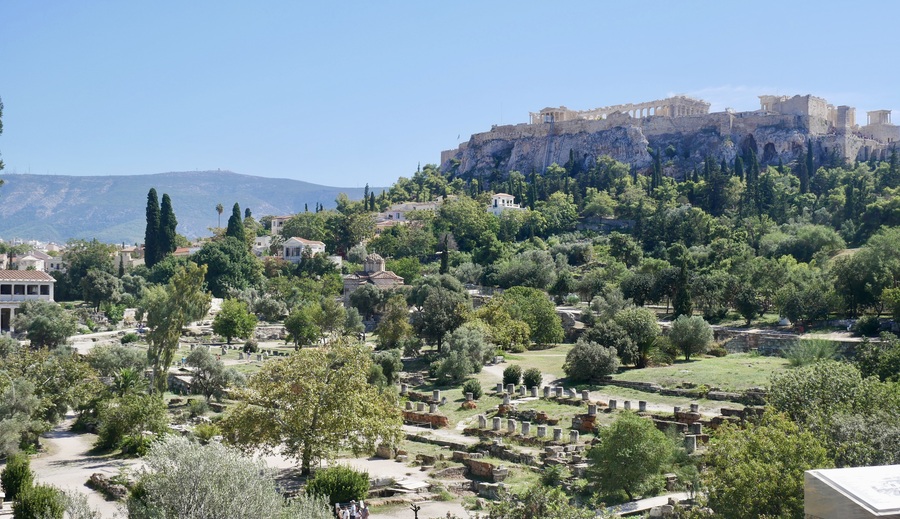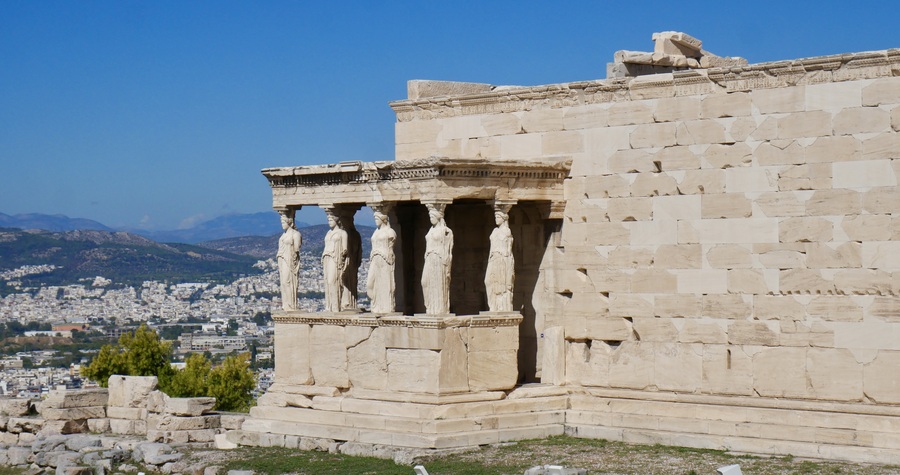
Visiting the Acropolis and Parthenon in Athens
The ancient Acropolis of Athens is the beating heart of Greece. Crowned by the Parthenon, its Pentelic marble ruins—visible from nearly everywhere within the city—tower above the modern Greek capital.
Arguably the most important building in the Western world, it is regarded as the apotheisis of Classical Greek civilization. The Acropolis is the original home of democracy. The birthplace of modern philosophy. The cradle of Western Civilization. One of ancient humanity’s crowning achievements.
And the absolute #1 place to visit in Athens (by a long shot).
THE ACROPOLIS OF GREECE: AN OVERVIEW
Ancient Greek temples lie scattered about the Mediterranean—from Paphos in Cyprus to Agrigento in Sicily, and from Ephesus in Turkey to Butrint in Albania. These temples and monuments are some of the most impressive archaeological sites in Europe.
But none of them are as renowned or as venerated as the Acropolis of Athens.
The term “Acropolis” means “high city.” Perched on a limestone hill above Athens, the Acropolis was once the political and spiritual center of Ancient Greece. It has withstood wars, earthquakes and vandalism throughout its long and storied history.
Today, the UNESCO World Heritage site is home to several temples, including the Parthenon.
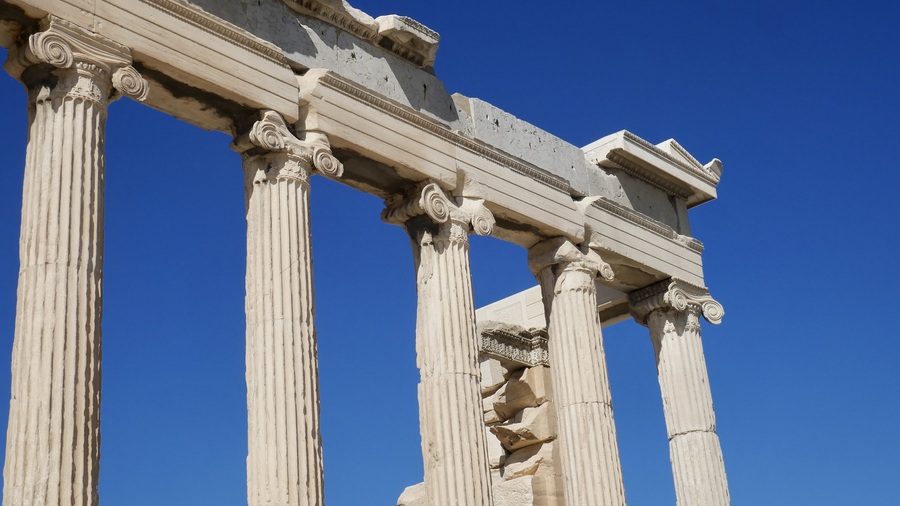
When it comes to ancient ruins, the Acropolis walks a path of importance alongside the Roman Colosseum, the Pyramids of Giza near Cairo, Chichen Itza in Mexico, and Cambodia’s Angkor Wat.
For history buffs, few places on Earth can compare.
TOP THINGS TO SEE
If you’ve seen a picture of the Acropolis, chances are that it featured the Parthenon—an enduring symbol of Athens and the most renowned Greek relic in the world. The Parthenon has become so synonymous with the Acropolis, that I’ve often heard the names used interchangeably.
But ‘Acropolis’ refers to the entire archaeological site overlooking Athens. And visiting the Parthenon is just one of many things to do within its boundaries.
I visited Athens for two nights following a trip to the islands of Santorini, Naxos, Paros, and Milos.
With one full day in Athens, my itinerary focused entirely on the Greek monument and its surroundings.
THEATER OF DIONYSUS
The ruined Theatre of Dionysos Eleuthereus sits on the southern slope of the Acropolis. As its name suggests, the theater was dedicated to Dionysus, the Greek god of Drama. Dating back to the 6th century BC, It is the oldest performance venue in ancient Greece.
The Acropolis theater was the stage upon which many famous Greek plays were first performed. Ancient playwrights—among them Sophocles and Euripides—presented their works at the theater during the 5th century BC.
In its heyday, the Theater of Dionysus could seat up to 17,000 people.
ODEON OF HERODES ATTICUS (HERODION)
The Odeon of Herodes Atticus appears better preserved than the nearby Theater of Dionysus. Built by Roman senator Herodes Atticus in around 161 AD, it is among the more complete structures in the Acropolis complex.
In 1950, a refurbishment project included the reconstruction of the Herodion’s amphitheater. The project brought the seating to about 5,000.
When we visited the Acropolis, we saw sound equipment on the Herodion’s stage. Bags of trash were strewn about the seats, indicating that there had likely been a performance the day before.
Today, the Herodion remains one of the world’s oldest still-functioning theaters. Some of the world’s leading performers have used it as a stage for their acts. Famous appearances include international legends Luciano Pavarotti, Frank Sinatra, and Elton John.
THE PROPYLAEA
If you come in through the archaeological site’s main entrance gates, the Propylaea is the first structure that you’ll likely encounter. It dominates the western side of the Acropolis—impressing visitors with its colonnaded entryway and stately marble exterior.
The building, dating back to 426BC, serves as the main gateway to the Parthenon and its nearby temples.
The Propylaea’s structure has received numerous modifications throughout antiquity, though it remains unfinished. The zigzagging ramp that leads to the top of the hill was a later Roman addition.
TEMPLE OF ATHENA NIKE
The small colonnaded Temple of Athena Nike lies at the southwestern edge of the Acropolis, adjacent to the Propylaea. One of the smallest temples in the Acropolis, it is notable for its gleaming white exterior.
In 1686, the Turks used chunks of marble from the Temple of Athena to build a fortification against the Venetians. A century and a half later, it was reconstructed….only to be dismantled again shortly after.
In 1998, restorers deconstructed and rebuilt the temple once more in order to replace its crumbling floor and reinforce its structure. Piece by piece, they painstakingly rebuilt it without using corrosive iron. New marble bricks from ancient quarries filled in the gaps.
As a result, the temple’s stones are a much lighter and brighter than those of the surrounding structures.
The boxy Temple of Athena Nike has been largely stripped of its original decor. The four sides of the small temple once boasted detailed bas reliefs illustrating the Greek and Persian wars.
The original reliefs now reside in the Acropolis Museum, alongside many of the archaeological site’s other treasures.
THE ERECHTHEION
While the Parthenon is understandably the most famous monument in the Acropolis, the Erechtheion is arguably its most beautiful. At least in its current form.
Named after Erechtheus, a mythical king of Athens, the temple was dedicated to Athena and Poseidon. It was here (as legend goes) that the god and goddess had a contest for the city’s affections.
On the south porch of the Erechtheion, six carved maidens support the structure. The original statues reside in the Acropolis Museum. They have been substituted by replicas.
The Erechtheion is unique in that its asymmetrical composition doesn’t conform to the canon of Classical Greek architecture. This could be due in part to the fact that the Erechtheion stands on slanted ground. Its structural integrity is a prime example of ancient Ionic ingenuity.
THE PARTHENON
Visiting the Acropolis would not be complete without laying eyes on the Parthenon. Dedicated to the Greek goddess Athena, the Parthenon sits high atop the Acropolis compound. It can be seen from many different vantage points around the city.
One of the most renowned structures in the world, the Parthenon is a resplendent marble temple built during the height of ancient Greek civilization.
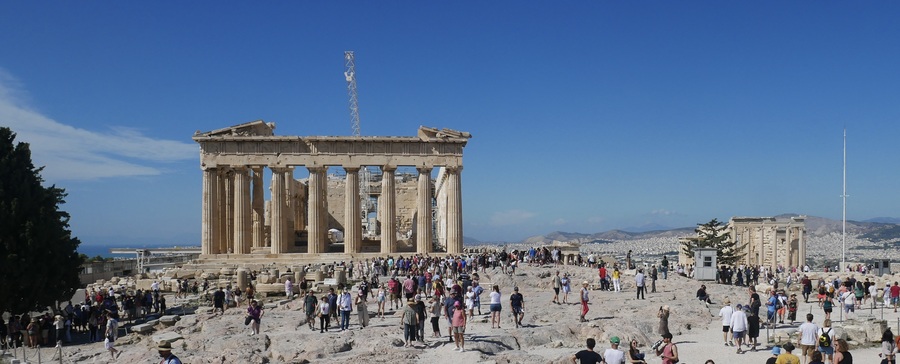
At the time of its construction, the Parthenon was the most lavish temple that Greece had ever seen. Throughout the centuries, it has weathered earthquakes, fire, wars, explosions and looting.
Today, scaffolding covers the entire front side of the Parthenon in a metal brace. Original reliefs have been removed from the structure. They now lie in the Acropolis Museum, alongside other treasures uncovered at the archaeological site.
Although battered throughout history and significantly altered due to preservation efforts, the Parthenon remains a powerful and enduring symbol of ancient Greece.
VISITING THE ACROPOLIS MUSEUM
Visiting Athens and skipping the Acropolis Museum is like going to Cairo and foregoing the Egyptian Museum. Or traveling to Mexico City and bypassing the Museum of Anthropology.
In other words, if you have any inkling of interest in archaeology or ancient history, visiting the Acropolis Museum should be a priority.
This dazzling museum lies at the foot of the Acropolis’ southern slope. It showcases many of the surviving treasures that were removed from the archaeological site for preservation.
In the museum, you can see the original reliefs from the Temple of Athena Nike, as well as the Caryatids from the Erechtheion.
The museum itself is an exemplary work of architecture. The airy modern building lies upon ruins that can be viewed from above. Floor-to-ceiling windows showcase panoramas of the Acropolis at every level.
VISITING ADDITIONAL ARCHAEOLOGICAL SITES
While the Acropolis is certainly Athens’ crown jewel, it is far from the only historical site of importance.
Surrounding the temple complex, you can find smaller archaeological sites that are also worth touring. Six of these ruins are included in the price of an Acropolis combination ticket.
-
THE ANCIENT AGORA
The Ancient Agora was once Athens’ hub of administrative, commercial, political and social activity. A place of assembly, it is where Socrates, Pericles and Plato once walked.
If you have any bandwidth for more ruins after a visit to the Acropolis, you should definitely prioritize the Ancient Agora. The temple of Hephaestus lies at the center of the archaeological site. It is one of the best-preserved temples in Greece.
Tickets to the Ancient Agora will set you back 10 euros, unless you purchase an Acropolis combo ticket.
-
THE ROMAN AGORA
The Roman Agora was the site of an ancient market during Roman rule. It occupied a much larger area than what you see today.
Much of the Roman Agora is visible from outside the fence, but it is worth entering the archaeological site for a closer look at the well-preserved Gate of Athena Archegetis, the Ottoman mosque, and the Tower of the Winds.
The site entrance fee is 8 euros per person.
-
HADRIAN’S LIBRARY
The ruins of Hadrian’s Library date back to the 2nd century AD. They consist of a library, a music hall, and lecture rooms. The site once resembled a Roman forum, with a central courtyard surrounded by 100 columns.
Much of the archaeological site rests in ruin today. A partially restored wall stands near its entrance.
Two churches—one built in the 12th century and another dating back to the 17th century—also occupy the site.
A stand-alone ticket to Hadrian’s Library costs 6 euros.
-
OLYMPIEION
At the center of the Olympieion, lies the colossal Temple of Olympian Zeus. One of the largest temples in Ancient Greece, it outdoes the Parthenon in terms of size. Sixteen of the temple’s 104 original columns are still standing.
In addition to housing a massive temple, the archeological site boasts a Roman bath house, a 5th century basilica, and remnants of the city’s fortification wall.
Just outside the site, standing guard over the vibrant Plaka neighborhood, lies Hadrian’s Arch.
Tickets to the Olympeion will set you back 6 euros.
-
KERAMEIKOS
Kerameikos is the site of the oldest and largest Attic cemetery. The archaeological site contains an array of ancient funerary monuments and structures.
The site’s name (“ceramic” in Greek) suggests that the ancient cemetery might have once housed a potter’s quarter.
The 8 euro Kerameikos entrance fee includes access to the site’s archaeological museum.
-
ARISTOTLE’S SCHOOL
Aristotle’s School, also known as the Lyceum or Lykeion, is the site of a legendary gymnasium. The archaeological area is best known as being the location of Aristotle’s school of philosophy.
The archaeological site boasts remnants of a large palestra, where athletes once trained in wrestling and boxing.
Today, the Lyceum lies largely in ruin. You’ll have to use your imagination to envision what it once looked like.
Admission costs 4 euros.
VIEWS OF THE ACROPOLIS IN ATHENS
While visiting the Acropolis is certainly worthwhile, it is almost more impressive to view the ancient ruins from a distance.
Luckily, the Greek capital boasts numerous vantage points from which to admire the ancient structures.
During our visit to Athens, we soaked in views of the monument from Areopagus Hill and Philopappos Hill.
-
AREOPAGUS HILL
Also known as Mars Hill, Aeropagus lies close to the Acropolis’ main entrance gate. It is a rocky outcrop that is popular for its photogenic views of the Propylaea.
From the Areopagus, you’ll also be able to see the Ancient Agora and the Temple of Hephaestus.
-
PHILOPAPPOS HILL
If you’ve got a little more time to explore, I recommend wandering the trails around Philopappos Hill. The verdant area— laced with walking trails and speckled with small churches and monuments—offers a great escape into nature. It lies within easy walking distance of the Parthenon and offers what is arguably Athens’ most impressive Acropolis viewpoint.
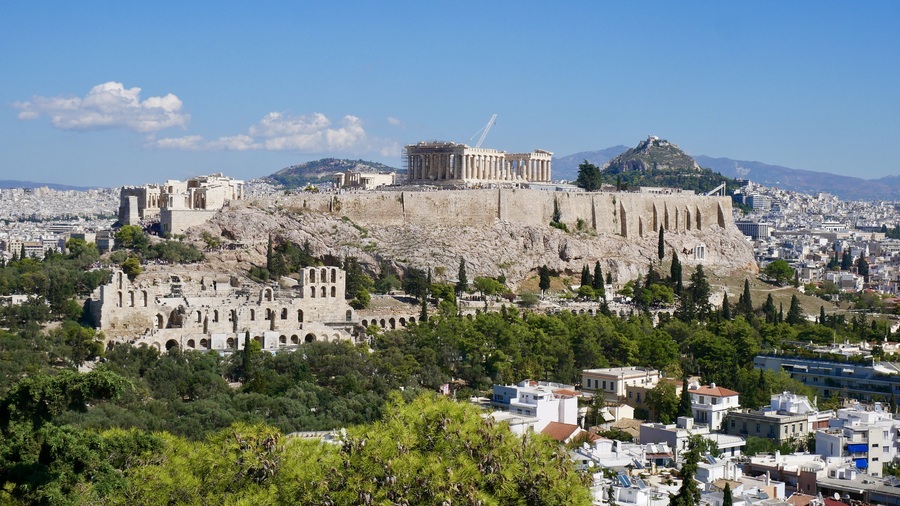
The area’s most popular Acropolis photo spot lies at the Monument of Philopappos.
However, it is possible to relish views of the Greek temple from various points in the park.
WHERE TO STAY WHEN VISITING THE ACROPOLIS
There are plenty of great places to stay near the Acropolis in Greece. Many of the best accommodations can be found in the vibrant Plaka neighborhood.
During our brief two day visit to Athens, my family and I rented an apartment near the Acropolis. Since we were traveling as a group of five, a private multi-room home suited our needs.
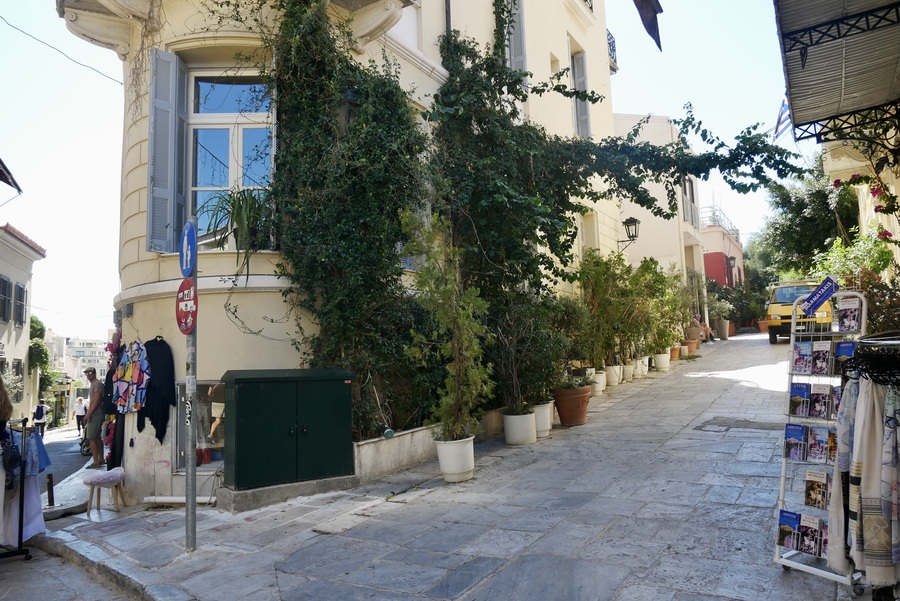
If you’re traveling Athens on a budget, the Kimon Hotel boasts highly-rated rooms at a reasonable price point. It is well-located and clean, albeit basic.
As a midrange option, 360 Degrees offers clean rooms, a convenient location, and stunning views of the Acropolis from its restaurant.
And if you’re looking to splurge, you might want to consider the Electra Metropolis—with its well-appointed rooms, rooftop pool, and unbeatable views of the Parthenon.
ACROPOLIS ENTRANCE FEES
You can buy your Acropolis tickets either online, or at a kiosk before entering the archaeological site. Tickets to the Acropolis (including the Parthenon and the Erechtheion) cost €20 from April through October and €10 from November through March.
Be advised that buying an entry pass online only enables you to skip queuing at the ticket office.
You can only avoid the entrance line by purchasing a skip-the-line ticket or taking a guided tour.
Combination ticket holders get entry to the Acropolis, as well as six of the other main archaeological sites in Athens: Hadrian’s Library, the Ancient Agora, the Roman Agora, the Archaeological Site of Lykeion, Kerameikos and the Olympieion.
A combination ticket costs €30.
****
Athens’ crown is the Acropolis. The Parthenon is its jewel. The epic marble monument soars above the city, visible from nearly every angle. Visiting the Acropolis and Parthenon is a top bucket list experience for travelers to Greece.
For millennia, the Acropolis has stood guard over Athens and served as a reminder of Greece’s contributions to politics, history, philosophy, medicine, and sport.
Without it, the world we’ve come to know would look very different.
______________________________________________
DID YOU ENJOY THIS GUIDE TO THE ACROPOLIS? PIN IT!
